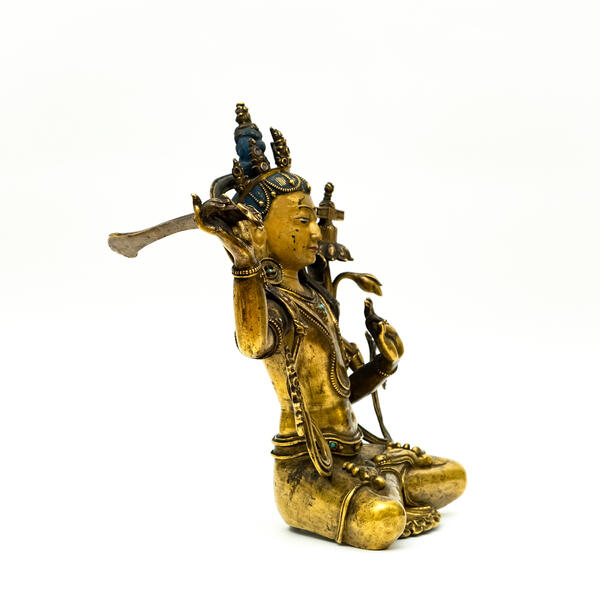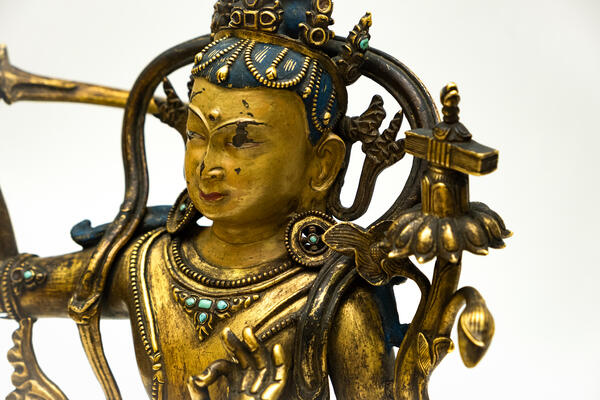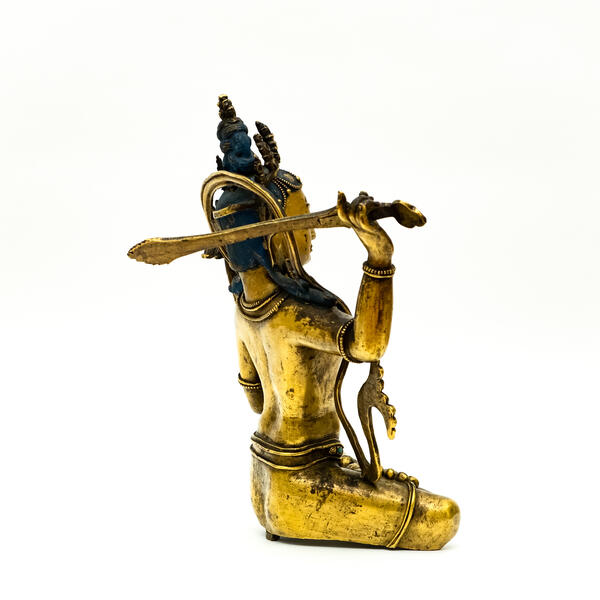Among the exhibits of the Sakha Republic National Art Museum, the graceful figure of Bodhisattva Manjushri sitting in padmasana (lotus position) is of particular interest. The exhibit is part of the section “Art of the East.” According to Manjushri’s iconography, in his raised right hand is a flaming sword, “dispelling the darkness of ignorance.” The fingers of his left hand are folded in a gesture signifying knowledge.
There are many Bodhisattvas in Buddhism, for example, in Mahayana the number of them may be beyond count, but only the Indian prince Bodhisattva Manjushri is depicted with a flaming sword of wisdom. His cult gained special popularity in Tibet and China, as well as in Japan, where his image is found in many legends. Manjushri’s name translates from Sanskrit as “Beautiful One with Glory, ” his epithet is Kumārabhūta, which means “former prince.” Bodhisattva signifies “the enlightened one who cleansed the awakened consciousness, ” one who refused to go into nirvana in order to save all living beings. He vowed to stay in samsara, the cycle of birth and death, in order to help other beings also achieve enlightenment.
Manjushri took vows of morality, courage, patience, contemplation, and wisdom. The acceptance of these vows marks the beginning of the Bodhisattva path. Having achieved enlightenment, he actively liberates all other living beings from samsara. A Bodhisattva gains “transcendental knowledge” at the end of his or her path. Manjushri is the guide and teacher of the Buddhas of the past, the spiritual father of Bodhisattvas, who embodies wisdom, intellect and will.
The work is cast in bronze, crafted with decorative
precision, adorned with gilding, and inlaid with small colored ornamental
stones (turquoise, jade and others). Despite its external tranquility, the
sculpture exhibits internal dynamism and expression, which is given to it by
swirling vegetal motifs immaculately executed by the artist. Such works do not
have the signatures of their creators because they were created in the
workshops at the monasteries. Some masters molded and cast, while others
polished, and others gilded, painted, and so on. The sculpture was created
according to certain canons passed down from generation to generation — they
record the centuries-old experience of ancient craftsmen.





